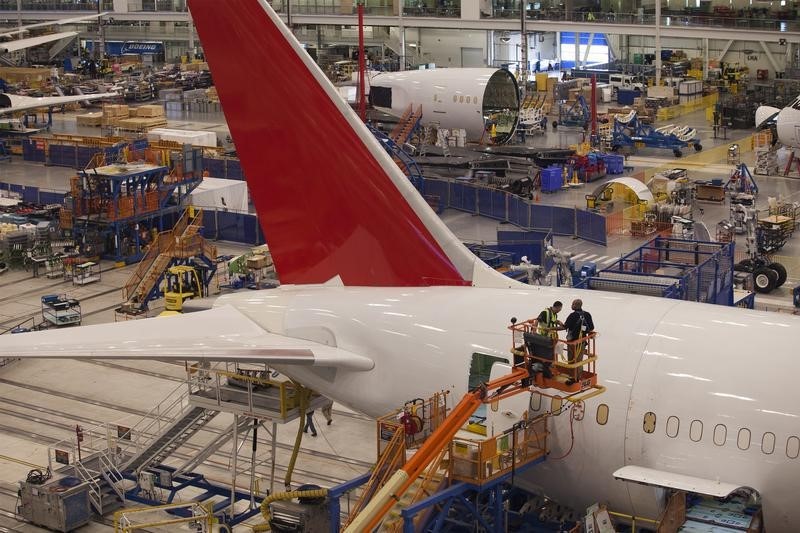By Lucia Mutikani
WASHINGTON (Reuters) - Growth in the U.S. services sector braked in December and new orders for manufactured goods fell for a fourth straight month in November, signs the economy lost some momentum in the fourth quarter.
But with domestic demand picking up, against the backdrop of lower gasoline prices and firming wage growth, any slowdown in economic growth is likely to be temporary.
"The economy hardly ended the year with a bang, but only because the recent pace was not sustainable. It is easing only modestly," said Joel Naroff, chief economist at Naroff Economic Advisors in Holland, Pennsylvania.
The Institute for Supply Management said on Tuesday its services index fell to 56.2 last month, the lowest reading since June, from 59.3 in November, which had left it just shy of revisiting its post-recession highs.
It was held back as growth across all categories moderated, with some respondents saying a labour dispute at the nation's West Coast ports was causing delays, which required the rerouting of goods to ports on the East Coast.
Respondents were upbeat on prospects for 2015. Wall Street had expected the index to only decline to 58 in December.
The data helped to push U.S. stocks lower. Prices for U.S. government debt rose, while the dollar fell marginally against a basket of currencies.
SUSTAINABLE LEVELS
"The December reading represents a settling back to more sustainable levels, rather than a sign that the economy is beginning to buckle," said Michelle Girard, chief economist at RBS in Stamford, Connecticut.
In a separate report, the Commerce Department said new orders for factory goods fell 0.7 percent in November as demand fell almost broadly. Orders had dropped by a similar margin in October.
It revised down November orders for non-defence capital goods excluding aircraft - seen as a measure of business confidence and spending plans - to show a 0.5 percent decline instead of being flat as it reported last month.
Shipments of these so-called core capital goods, which go into the calculation of gross domestic product were revised down to show a 0.2 percent drop instead of a 0.2 percent rise. The report also showed inventories at factories barely rising for a second straight month in November.
The weak core capital goods shipments and stock accumulation prompted Barclay (LONDON:BARC)s and forecasting firm Macroeconomic Advisers to trim their fourth-quarter GDP estimate by one-tenth of a percentage point to a 2.7 percent annual rate.
The economy grew at a 5 percent rate the third quarter, the quickest pace in 11 years. The anticipated pullback in the final three months of 2014 reflects slowing growth in China and the euro zone, as well as a recession in Japan, which are crimping demand for U.S. goods.

While factory activity after the third quarter's robust performance cooled, underlying strength remains. Unfilled factory orders rose 0.4 percent in November. Order backlogs have increased in 19 of the last 20 months.
(Reporting by Lucia Mutikani; Additional reporting by David Gaffen in New York; Editing by Andrea Ricci)